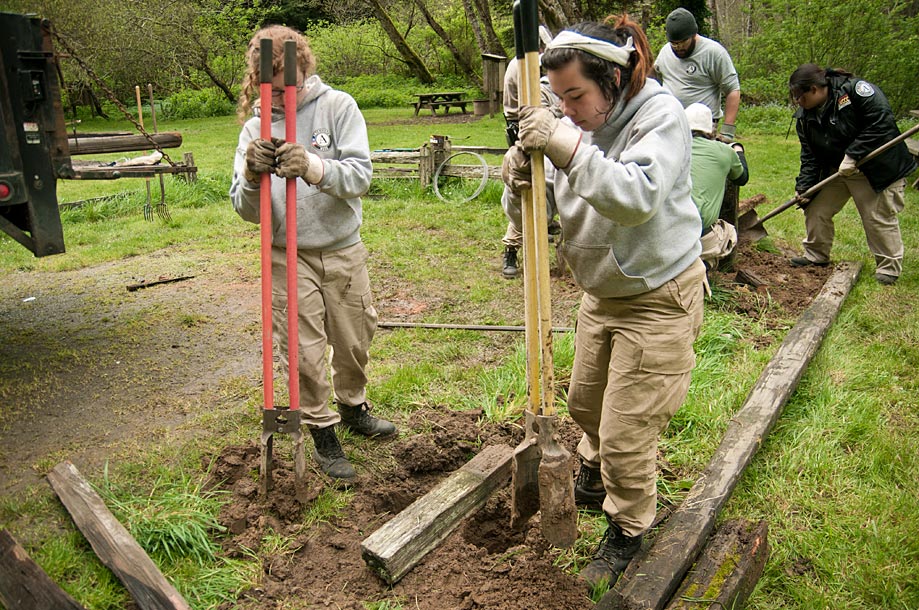NCCC Team Blue 4 wields weed wrenches used to remove the invasive Scotch Broom at Milo McIver State Park.
The difficulty with removing invasive species is that you never seem to remove everything. It's because of this notion that the work, while physical in nature, is more mentally taxing than anything. Exotic species removal may set the invasion back a few years, but it's really just a small dent in the amount of work that really needs to be done. Why spend long 10-hour days removing a plant when, at the end of the week, there are endless fields of it still in sight? You are told that every bit helps, that persistence in the manual removal of the plant adds up in the long-run. But that's only if crews are continuously sent in to remove it. That, unfortunately, does not happen. Grants to organizations that support crews like ours are sparse and quickly run out of money. It could be years before the next crew is sent in, as evidenced by the 10+ year-old Scotch Broom we were removing. Scotch Broom wasn't eradicated during our time at Milo McIver State Park, and who knows if it ever will be?












































































